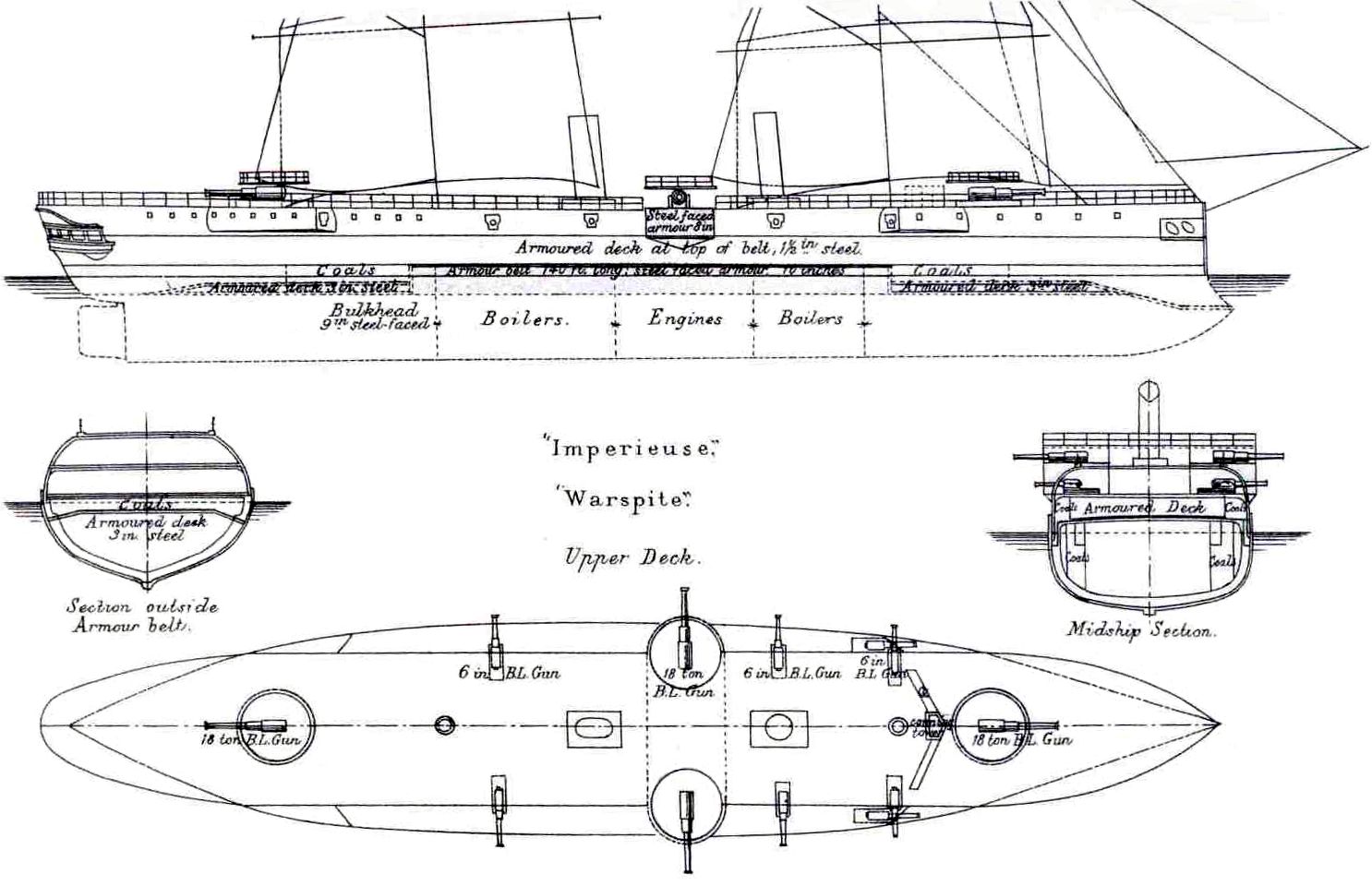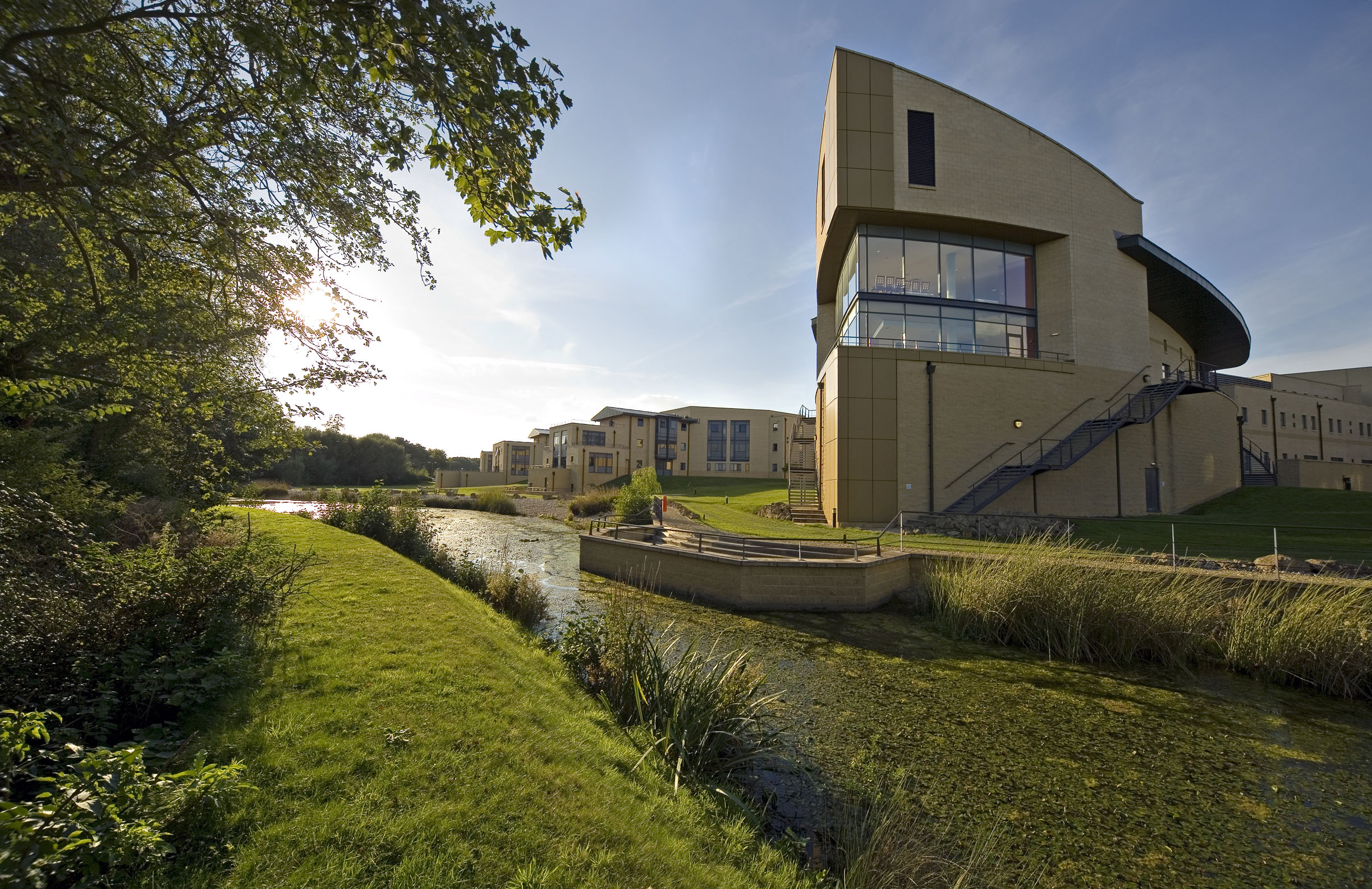|
Imperieuse-class Cruiser
The ''Imperieuse''-class cruiser was a class of two armoured cruisers launched between 1883 and 1884 for the Royal Navy. Description In an 1886 magazine article, Sir Edward Reed complained that these ships did not deserve to be called "armoured", as they were not armoured at bow or stern, only along the middle of each side. This armour belt was additionally only wide, and as designed would have extended above the waterline. As completed, the two ships were overweight, with the result that the belt was completely submerged, leaving them armoured in name only. The layout of the main armament was unusual for the time, having one gun each forward and aft, and another gun mounted on either beam – in a lozenge arrangement similar to that employed by the French. The original secondary battery comprised ten 6-inch (152mm) guns, but the overweight condition of these ships forced the elimination of four of these weapons. Intended for prolonged deployments on distant foreign s ... [...More Info...] [...Related Items...] OR: [Wikipedia] [Google] [Baidu] |
Armoured Cruiser
The armored cruiser was a type of warship of the late 19th and early 20th centuries. It was designed like other types of cruisers to operate as a long-range, independent warship, capable of defeating any ship apart from a battleship and fast enough to outrun any battleship it encountered. For many decades, naval technology had not advanced far enough for designers to produce a cruiser which combined an armored belt with the long range and high speed required to fulfill its mission. For this reason, beginning in the 1880s and 1890s, many navies preferred to build protected cruisers, which only relied on a light armored deck to protect the vital parts of the ship. However, by the late 1880s, the development of modern rapid-fire breech-loading cannon and high-explosive shells made the reintroduction of side armor a necessity. The invention of face-hardened armor in the mid-1890s offered effective protection with less weight than previously. Varying in size, the armored cruiser ... [...More Info...] [...Related Items...] OR: [Wikipedia] [Google] [Baidu] |
Royal Navy
The Royal Navy (RN) is the United Kingdom's naval warfare force. Although warships were used by English and Scottish kings from the early medieval period, the first major maritime engagements were fought in the Hundred Years' War against France. The modern Royal Navy traces its origins to the early 16th century; the oldest of the UK's armed services, it is consequently known as the Senior Service. From the middle decades of the 17th century, and through the 18th century, the Royal Navy vied with the Dutch Navy and later with the French Navy for maritime supremacy. From the mid 18th century, it was the world's most powerful navy until the Second World War. The Royal Navy played a key part in establishing and defending the British Empire, and four Imperial fortress colonies and a string of imperial bases and coaling stations secured the Royal Navy's ability to assert naval superiority globally. Owing to this historical prominence, it is common, even among non-Britons, ... [...More Info...] [...Related Items...] OR: [Wikipedia] [Google] [Baidu] |
Cruiser Classes
A cruiser is a type of warship. Modern cruisers are generally the largest ships in a fleet after aircraft carriers and amphibious assault ships, and can usually perform several roles. The term "cruiser", which has been in use for several hundred years, has changed its meaning over time. During the Age of Sail, the term ''cruising'' referred to certain kinds of missions—independent scouting, commerce protection, or raiding—fulfilled by frigates or sloops-of-war, which functioned as the ''cruising warships'' of a fleet. In the middle of the 19th century, ''cruiser'' came to be a classification of the ships intended for cruising distant waters, for commerce raiding, and for scouting for the battle fleet. Cruisers came in a wide variety of sizes, from the medium-sized protected cruiser to large armored cruisers that were nearly as big (although not as powerful or as well-armored) as a pre-dreadnought battleship. With the advent of the dreadnought battleship before World Wa ... [...More Info...] [...Related Items...] OR: [Wikipedia] [Google] [Baidu] |
Thomas Brassey, 2nd Earl Brassey
Thomas Allnutt Brassey, 2nd Earl Brassey TD, DL, JP, MInstNA, AMICE (7 March 1863 – 12 November 1919), styled Viscount Hythe between 1911 and 1918, was a British peer, who was for many years editor or joint editor of ''Brassey's Naval Annual''. Brassey was the only son of Thomas Brassey, 1st Earl Brassey, by his first wife Anna, daughter of John Allnutt. He was educated at Eton and Balliol College, Oxford. Brassey was an honorary Lieutenant in the London Brigade of Royal Naval Artillery Volunteers from 1888 to 1892. He acted as Assistant Private Secretary to Earl Spencer during the time the latter was First Lord of the Admiralty (1892–95), and in 1894 was Assistant Secretary of the Royal Commission on Opium that his father chaired. Brassey was appointed a captain in the Queen's Own West Kent Yeomanry on 19 January 1898. After the outbreak of the Second Boer War in late 1899, Brassey volunteered for active service and was commissioned Captain of 69 (Sussex) Compan ... [...More Info...] [...Related Items...] OR: [Wikipedia] [Google] [Baidu] |
Brassey's Naval Annual
''The Naval Annual'' was a periodical that provided considerable text and graphic information (largely concerning the British Royal Navy) which had previously been obtainable only by consulting a wide range of often foreign language publications. During its life it underwent a number of title changes. The ''Annual'' was started by Thomas Brassey, 1st Earl Brassey, in 1886. Though often compared with ''Jane's Fighting Ships'', the two British annuals were, in fact quite different. The Brassey series began a dozen years earlier, and its special strength was the dozen or more detailed articles on naval (plus, from 1920 through 1935, merchant marine) matters, authored by experts. They covered British and other nations' naval developments ranging from the latest ships to overall policy. The first five or six Brassey volumes used a second printing colour (a light blue green) to highlight armored portions of naval vessels' hulls. Through 1949, the series was also known for its ex ... [...More Info...] [...Related Items...] OR: [Wikipedia] [Google] [Baidu] |
Shrivenham
Shrivenham is a village and civil parish in the Vale of White Horse, Oxfordshire, England, about south-west of Faringdon. The village is close to the county boundary with Wiltshire and about east-northeast of Swindon. The 2011 Census recorded the parish population as 2,347. The parish is within the historic boundaries of Berkshire; the 1974 boundary changes transferred the Vale of White Horse to Oxfordshire for administrative purposes. History There has been human settlement at Shrivenham from at least 400 BC. The remains of a Roman villa have been uncovered nearby. Shrivenham was part of Shrivenham Hundred which included Ashbury, Buscot, Coleshill, Compton Beauchamp, Eaton Hastings, Longcot, Shrivenham, and Uffington. Shrivenham has numerous thatched cottages, stone walls, an historic pump and a parish church that is unusual for having been rebuilt in the 17th century. The village has three historic public houses: the Barrington Arms, The Crown and the Prince of Wale ... [...More Info...] [...Related Items...] OR: [Wikipedia] [Google] [Baidu] |
Royal Military College Of Science
The Royal Military College of Science (RMCS) was a British postgraduate school, research institution and training provider with origins dating back to 1772. It became part of the Defence Academy of the United Kingdom in 2009, and ceased to exist as an independent unit in 2015. History Predecessors The college traced its history back to the Military Society of Woolwich, founded by two artillery officers in 1772 'for the theoretical, practical and experimental study of gunnery'. The Society did not outlast the Napoleonic Wars; but in 1839, inspired by its example, two junior officers (Lt (later Gen Sir) J. H. Lefroy and Lt (later Maj-Gen) F. M. Eardley-Wilmot) proposed the formation of an Institute to train artillery officers along similar lines. This led to the establishment the following year of the Royal Artillery Institution "for the study of science and modern languages". Initially the RA Institution was supported by voluntary donations, but a grant of public money in ... [...More Info...] [...Related Items...] OR: [Wikipedia] [Google] [Baidu] |
Brig
A brig is a type of sailing vessel defined by its rig: two masts which are both square-rigged. Brigs originated in the second half of the 18th century and were a common type of smaller merchant vessel or warship from then until the latter part of the 19th century. In commercial use, they were gradually replaced by fore-and-aft rigged vessels such as schooners, as owners sought to reduce crew costs by having rigs that could be handled by fewer men. In Royal Navy use, brigs were retained for training use when the battle fleets consisted almost entirely of iron-hulled steamships. Brigs were prominent in the coasting coal trade of British waters. 4,395 voyages to London with coal were recorded in 1795. With an average of eight or nine trips per year for one vessel, that is a fleet of over 500 colliers trading to London alone. Other ports and coastal communities were also be served by colliers trading to Britain's coal ports. In the first half of the 19th century, the vast majority ... [...More Info...] [...Related Items...] OR: [Wikipedia] [Google] [Baidu] |
Edward James Reed
Sir Edward James Reed, KCB, FRS (20 September 1830 – 30 November 1906) was a British naval architect, author, politician, and railroad magnate. He was the Chief Constructor of the Royal Navy from 1863 until 1870. He was a Liberal politician who sat in the House of Commons from 1874 to 1906. Early life Edward Reed was born in Sheerness, Kent and was the son of John and Elizabeth Reed. He was a naval apprentice at Sheerness and subsequently entered the School of Mathematics and Naval Construction at Portsmouth. In 1851 he married Rosetta, the sister of Nathaniel Barnaby. Barnaby was at that time a fellow student; he would subsequently succeed Reed as Chief Constructor. In 1852 he entered employment at Sheerness Dockyard, but resigned after a disagreement with the management. He then worked in journalism, including editing the '' Mechanics' Magazine''. In 1860, Reed was appointed secretary of the newly formed Institute of Naval Architects. Naval architect In 1863, at the e ... [...More Info...] [...Related Items...] OR: [Wikipedia] [Google] [Baidu] |
Imperieuse Class Right Elevation And Deck Plan have borne the name HMS ''Imperieuse'':
* was a 40-gun fifth-rate captured from the France, French in 1793. She was renamed HMS ''Unite'' in 1803, was on harbour service from 1832, and was broken up in 1858.
* was a 40-gun fifth rate that the Dutch launched on 30 October 1797 and the British captured in 1799. The Royal Navy renamed her ''Imperieuse'' in 1801; she was broken up in 1805.
* was a 38-gun fifth-rate, previously the Spanish ship ''Medea'' (1797). She was captured in 1804 and taken into service as HMS ''Iphigenia'' but renamed ''Imperieuse'' in 1805, placed on harbour service in 1818, and sold in 1838.
* was a wooden screw frigate launched in 1852 and sold ...
Six ships and a training establishment of the Royal Navy The Royal Navy (RN) is the United Kingdom's naval warfare force. Although warships were used by English and Scottish kings from the early medieval period, the first major maritime engagements were fought in the Hundred Years' War against ... [...More Info...] [...Related Items...] OR: [Wikipedia] [Google] [Baidu] |






